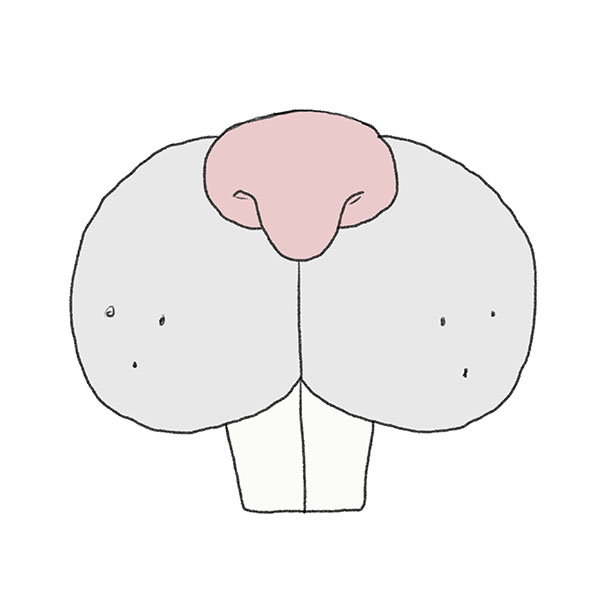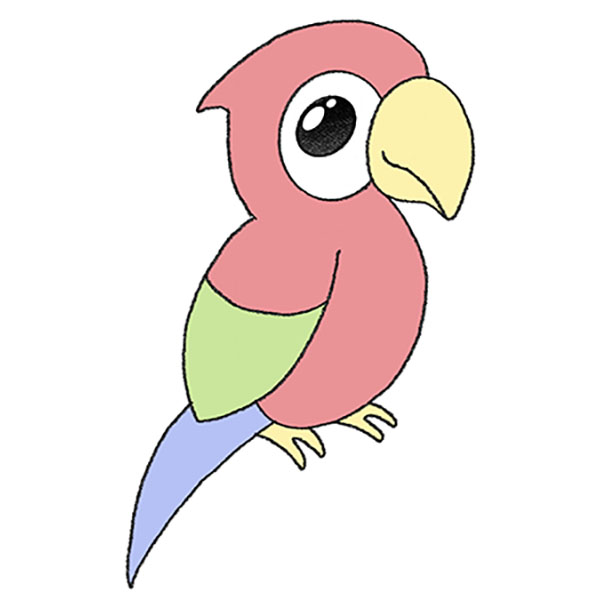How to Draw a Tarantula
Get your pencils ready to learn how to draw a tarantula that’s more cute than creepy. So, follow my simple steps for a cartoon-like spider that everyone will love.
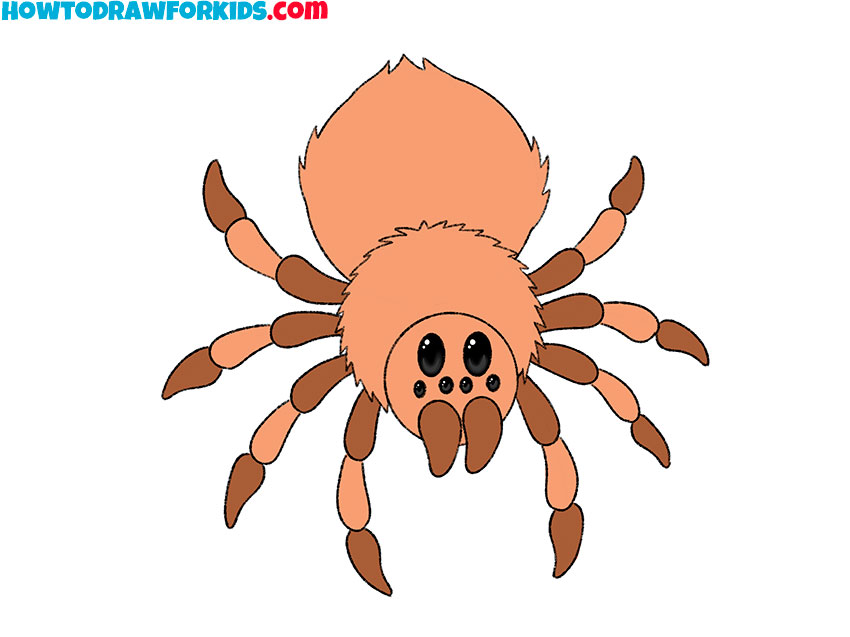
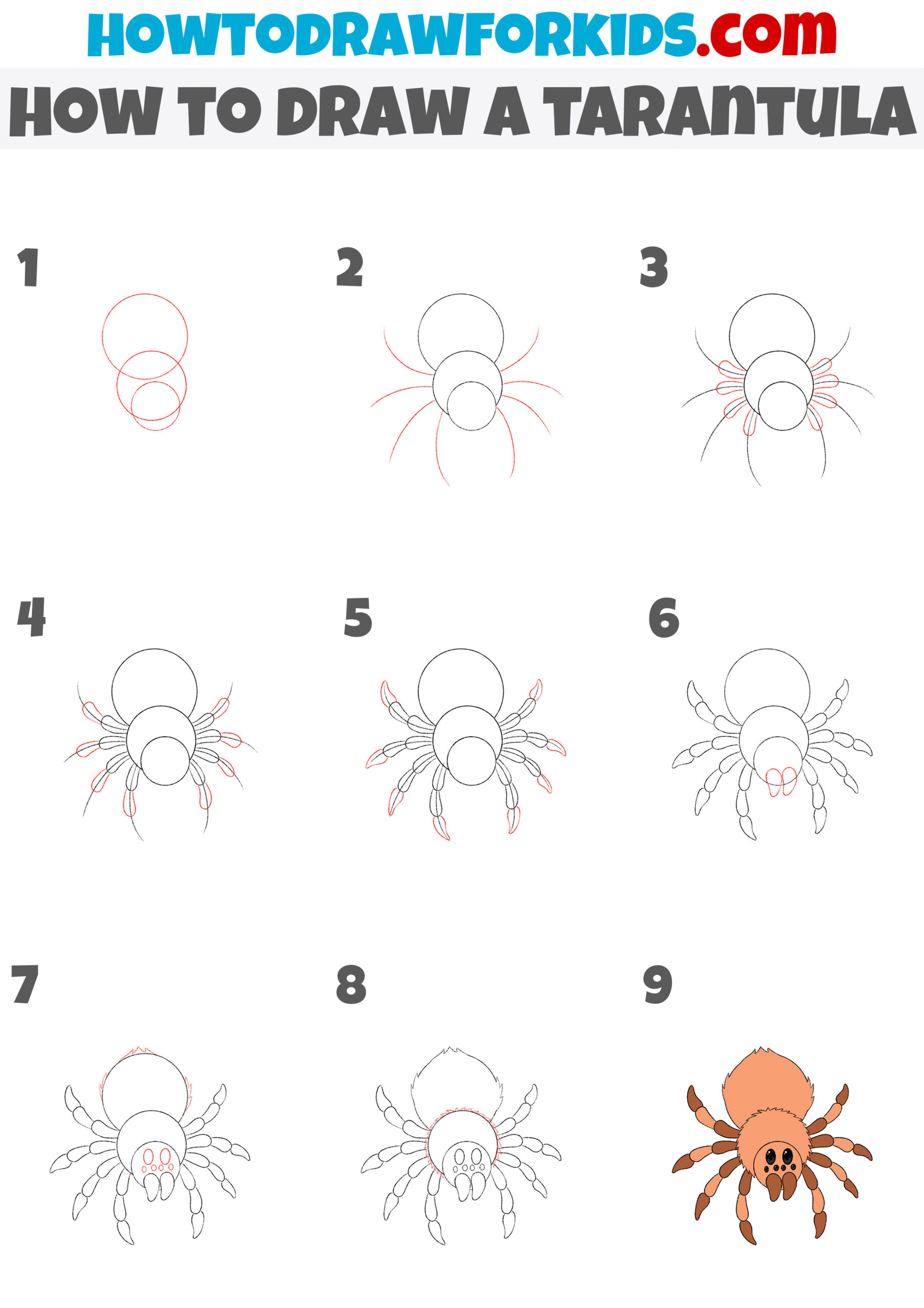
How to Draw a Tarantula: Basic Information
Today, I’m super excited to guide you through a special drawing tutorial: how to draw a tarantula in a fun, cartoon style! Now, I know what you might be thinking – tarantulas are big, hairy, and sometimes a bit scary. But for us as artists, they’re just big, fluffy friends waiting to pop out of our imagination and onto our paper.
Drawing a tarantula can be as fun as it is intriguing. With their eight wiggly legs, two curious eyes, and a plump body, these creatures become a really interesting drawing object. As a result, we will transform these scary spiders into cute, friendly creatures that smile back at us!
We’ll start with simple shapes to get the body just right, add some squiggly lines for legs, and don’t forget the big, friendly eyes that make our tarantula drawing come to life.
So grab your pencils, markers, or crayons, and let’s draw a tarantula that’s not only cool to look at but also super cool to create.
Tarantula Drawing Tutorial
Materials
- Pencil
- Paper
- Eraser
- Coloring supplies
Time needed: 30 minutes
Steps on How to Draw a Tarantula
- Sketch the tarantula body segments.
Begin by drawing three overlapping circles to outline the tarantula’s body segments. The bottom circle will be the smallest, representing the head. Above it, slightly larger, is the middle circle for the thorax, and the largest circle at the top is for the abdomen.

- Sketch the guidelines for the tarantula legs.
Tarantulas have eight legs, so draw eight curved lines extending out from the thorax circle. These lines should be evenly spaced, four on each side, curving outward to indicate the direction of the legs. These initial lines will help you position the legs correctly.

- Outline the base of the legs.
Start shaping the legs by drawing ovals over the guidelines you created in the previous step. Each leg should have three segments, so draw an oval at each point where the guideline bends. This will give the legs a more realistic structure.
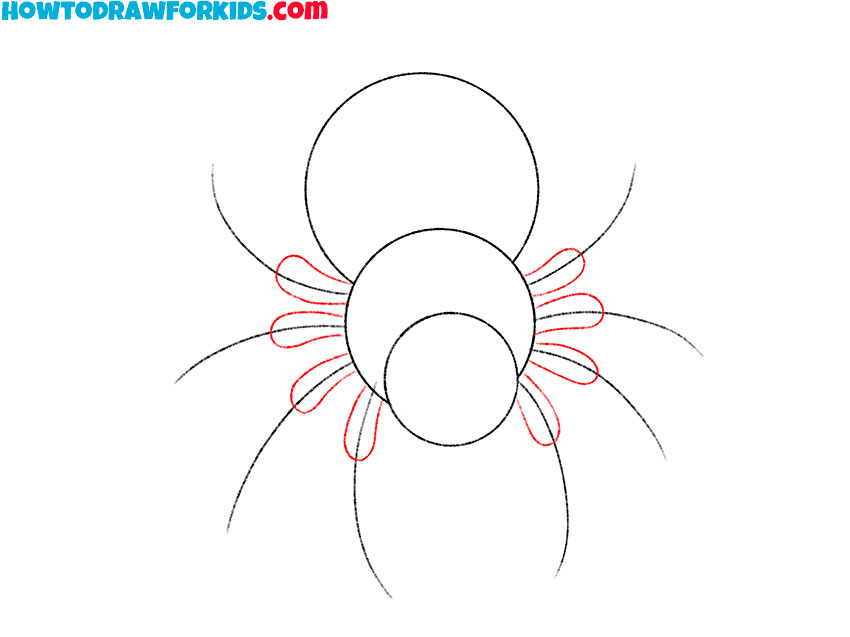
- Add more segments on the legs.
Refine the leg shapes by adding more detail to the segments. To each segment from the previous step, add another segment representing the middle parts of the legs. These segments should have approximately the same shape and the same size as the segments drawn in the third step.
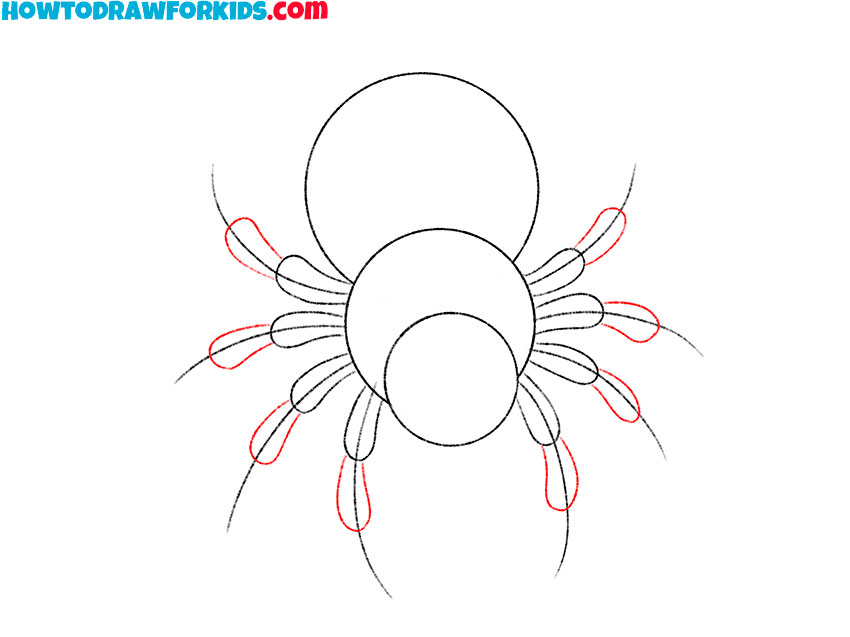
- Draw the ends of the tarantula legs.
Draw small, curved shapes at the tip of each leg to represent the claws ends of the legs. These should be slightly pointed and curved. This step adds detail to the tarantula’s legs, making them look more lifelike. These leg segments should be the smallest of all.
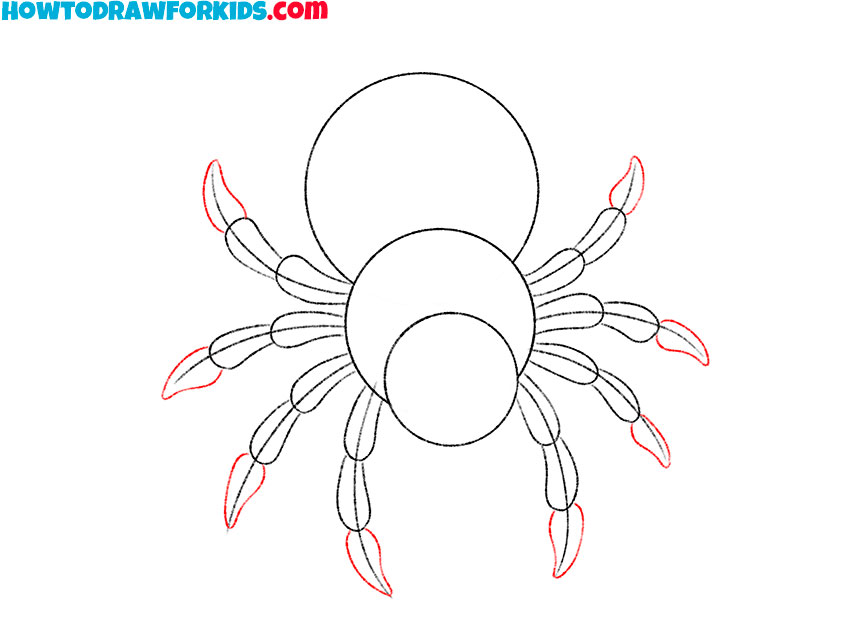
- Draw the tarantula’s pedipalps.
Add small appendages near the mouth. Draw two small, segmented appendages at the front of the head circle. These should be similar in structure to the legs but shorter and positioned at the front of the head. Both pedipalps should be the same size and shape.
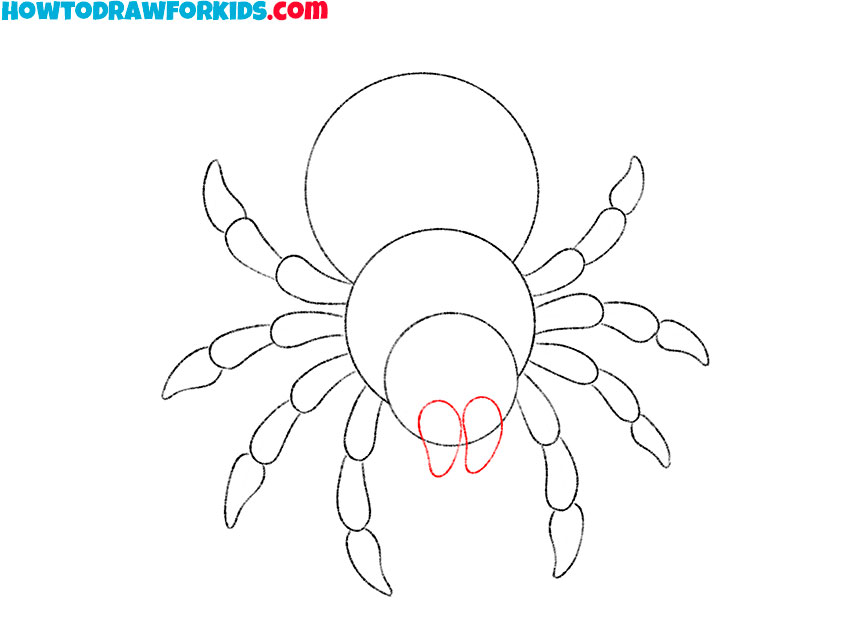
- Draw the eyes and hair.
Tarantulas have multiple eyes, usually clustered together. Draw a group of small circles near the front of the head. The eyes should be different sizes, with the larger ones in the center and smaller ones around them. Next, using jagged lines draw hair at the end of the tarantula’s belly.
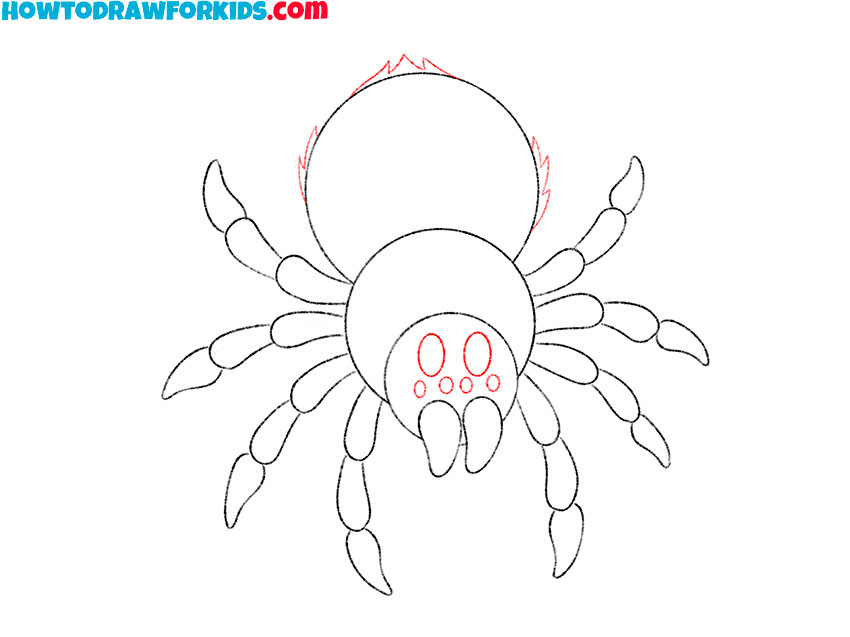
- Add more hair to the spider.
To make the tarantula look more realistic, add hair and texture to its thorax. You can also draw short, curved lines along the legs, body, and head to represent the tarantula’s hairy surface. Additionally, you can add hair texture within the outlines of these body parts using short, longitudinal lines.
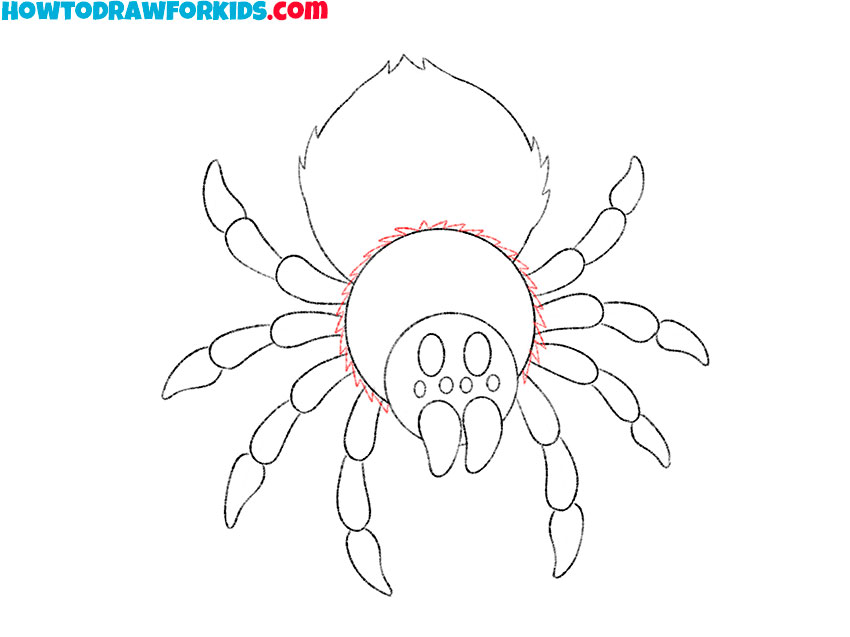
- Color the tarantula drawing.
Use shades of brown, orange, or black to give the tarantula a natural appearance. Color the body segments, legs, and head. You can add shading and highlights to give the tarantula a three-dimensional look. Pay attention to the eyes, making them stand out with a glossy finish.
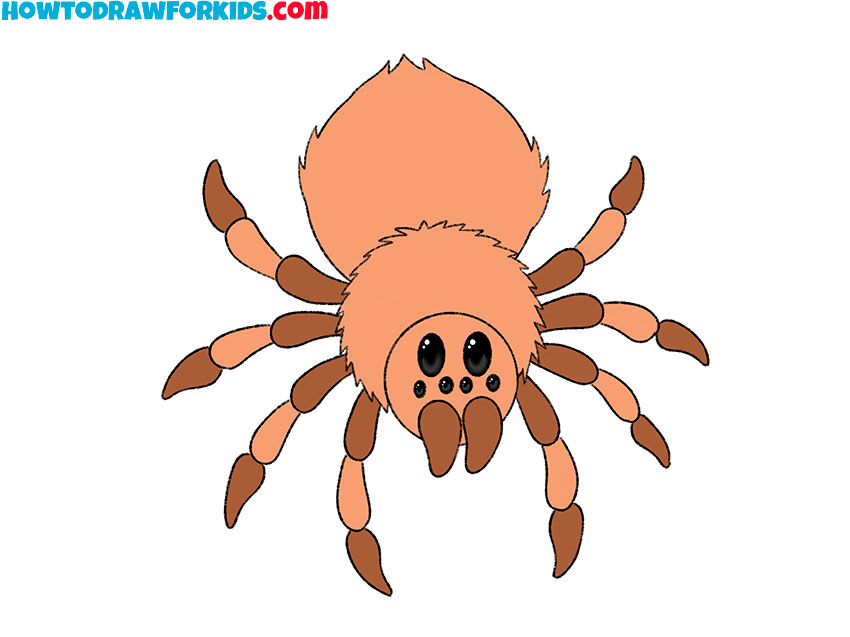
Additional Materials
I’ve additionally prepared a free PDF file with a condensed version of my tarantula drawing lesson. This means that now you can enjoy creating your cartoonish spider anytime and anywhere. Moreover, this handy file is yours to keep and entirely free of charge.
Even if you find yourself somewhere without internet access, you can still open up this PDF and start drawing. Furthermore, it’s a great way to practice over and over again, until you’ve mastered drawing this eight-legged buddy.
Make Your Tarantula Drawing More Fun
Did you know that with just a few fun tweaks, we can make your tarantula drawing even more interesting and adorable? That’s right! Let’s see how we can make the art even cooler:
- Firstly, draw the eyes super large, like two big marbles. Exaggerating the size makes our spider look super friendly and a lot less scary. Inside these big eyes, add a small circle in the corner to represent a gleam.
- Next, let’s give our tarantula a smile that stretches from one side to the other. Just a long, upward curve will make it look like it’s having the best day ever.
- Then, instead of straight lines, use wavy ones for the legs. Imagine they’re wiggling to some groovy music. This will give the impression that your tarantula is in the middle of a happy dance.
- Moving on, forget about the usual browns – pick your favorite colors to fill in the body. Maybe a splash of sunny yellow or a cool blue? These vibrant hues will make your drawing look really unusual.
- Lastly, for an extra touch of fun, why not draw a tiny top hat on its head or a quirky bow tie around its neck? Accessories like these are unexpected on a spider and will surely bring a giggle.
How to Draw a Tarantula: FAQ
Great job following the steps of draw your tarantula! Now that you’ve completed the tutorial, you might have some additional questions or need further guidance.
To help you refine your skills and address any concerns, i’ve put together a FAQ section. This includes tips, techniques, and answers to common questions that will enhance your drawing experience.
Use a light touch with your pencil and consider using a compass or circular objects (like bottle caps or coins) to trace the circles. The head circle should be the smallest, the thorax slightly larger, and the abdomen the largest. Ensure they are evenly spaced and aligned vertically.
Guidelines help in maintaining the proportions and symmetry of your drawing. They act as a framework that guides you in placing features like legs, eyes, and body segments accurately, ensuring your tarantula looks realistic.
Absolutely! While real tarantulas are typically brown, black, or orange, feel free to use your imagination and creativity. You can use any colors you like to make your tarantula unique and vibrant.
Pay attention to details such as the texture of the hair, the segments of the legs, and the positioning of the eyes. Adding shading and highlights can give your tarantula a three-dimensional look. Observing photos of real tarantulas for reference can also be very helpful.
To achieve a glossy effect on the eyes, leave a small white highlight area when coloring. This should be placed where light naturally hits the eyes. Using a white gel pen or colored pencil for the highlight can enhance the glossy look, making the eyes appear shiny and more lifelike.
Yes, you can draw the tarantula in various poses. For a different pose, adjust the angles and curves of the leg guidelines accordingly. Look at reference images of tarantulas in different positions to understand how their legs and body move.
Conclusion
And just like that, we’ve reached the end of our tarantula drawing lesson! I hope you enjoyed the process and improved your drawing skills.
I aimed to show you how to draw this creature in a way that makes it look cute. Additionally, you now know how to give your drawing unique features and avoid mistakes in the drawing process.
Don’t forget, this tarantula drawing is just one the thousands of my super easy tutorials! There are so many more lessons on my website. And for the latest updates and new tutorials, make sure to follow me on social media.

